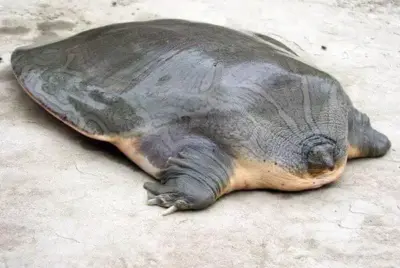Do Dogs Have Belly Buttons? Fact or Fiction?
Ever looked at your furry friend and wondered, “Hey buddy, do you have a belly button like me?” I did, and the answer to this intriguing question took me on a fascinating journey! I began reading into what causes a living being to have a belly button and answer once and for all: “Do dogs have belly buttons?”
A Glimpse into Mammalian Birth
Like us, dogs are mammals. And all mammals, from humans to whales, are born connected to their mothers through an umbilical cord. Sounds familiar, right?
Canine Umbilical Cord: The Connection
The umbilical cord, an often overlooked aspect of canine development, is a testament to the intricate marvels of biology and the early connection between a mother and her puppy. Understanding its function and significance gives us insight into the early life of our beloved furry companions.
This cord is their lifeline, supplying them with nutrients and oxygen. But once they’re out in the world, this cord is no longer needed and is snipped off, leaving behind… you guessed it, a belly button!
The Origin and Formation
Conception to Connection
Soon after conception, as the embryo begins to grow, the umbilical cord forms as a lifeline between the developing puppy and its mother. This cord originates from the yolk sac, which initially provides nutrients to the embryo.
The Makeup of the Cord
The canine umbilical cord, while somewhat different from ours, is composed of vital elements. The Wharton’s jelly, a gelatinous substance, encapsulates and protects the blood vessels within. These vessels are the conduit for nutrition, oxygen, and waste exchange.
Life-Sustaining Functions
Transporting Essentials
The umbilical cord houses two main arteries and a vein. The arteries carry deoxygenated blood and waste from the fetus to the mother’s placenta, where it’s cleansed and replenished. The vein, conversely, transports oxygen-rich blood and nutrients from the mother to the growing puppy.
Hormonal Exchange
Beyond just nutrients and oxygen, the umbilical cord also allows for the transfer of essential hormones. These hormones play pivotal roles in the fetus’s growth and the development of organs.
Severing the Lifeline: Post-Birth
Natural Separation
Once the puppies are born, the umbilical cord’s role is fulfilled. Mothers instinctively sever the cord, using their teeth. This natural process is both a protective mechanism and a step towards the puppy’s independent life.
The Healing Process
After the cord is severed, the remaining stub on the puppy’s belly undergoes a drying process. Over a period of days to weeks, it dries, shrinks, and eventually falls off, leaving behind what we recognize as the belly button.
Potential Concerns and Care
Umbilical Infections
Though rare, there’s potential for infections around the umbilical area, especially if the cord isn’t severed cleanly or the environment is unhygienic. Signs include swelling, redness, or discharge.
Observing and Protecting
As responsible pet parents, it’s essential to observe the umbilical region post-birth. Ensure it’s clean and dry. Any signs of distress or discomfort should warrant a vet’s consultation.
Spotting the Canine Belly Button
Just like a treasure hidden beneath layers, a dog’s belly button remains one of its subtlest features. But why is it so discreet, and how can you, as a loving pet parent, find it?
Why is it Hard to Notice?
Unlike in humans, where the navel is a clear remnant of our umbilical connection, a dog’s belly button is usually a small, flat scar. This discreet mark is camouflaged amidst their fur, making it less noticeable.
Evolutionary Camouflage
Back when dogs were wild creatures, any external vulnerability could be a point of weakness. Over the eons, a less conspicuous navel possibly meant a lower risk of injury or infection.
Fur’s Natural Concealment
The thickness and color of a dog’s fur play a major role in how noticeable their belly button is. Those with denser fur or intricate patterns can easily mask the navel.
Tips for Finding Your Dog’s Navel
It’s not about merely finding a physical mark, but also about understanding and appreciating a symbol of your dog’s earliest life stage.
Feeling More than Seeing
Use your fingers to gently feel your dog’s belly. More often than not, the navel can be detected by touch rather than sight, as a slightly raised or indented scar.
Look Post-Bath
After a bath, as the fur is wet and clings to the skin, it’s a good time to spot the belly button. The wet fur makes it easier to reveal what’s typically hidden.
Engage in Play
Many dogs love rolling on their backs during playtime. The next time your furry friend is up for a game of “belly rubs,” take a closer look!
Ask the Vet
On your next veterinary visit, ask them to point it out. They have a trained eye and can guide you.
Significance of Recognizing the Canine Navel
Beyond mere curiosity, understanding and recognizing your dog’s belly button has its benefits.
Health Checks
Regularly inspecting the belly area can help in identifying any unusual lumps, growths, or signs of distress that might appear around the navel, ensuring your dog’s health and well-being.
Bonding Time
The act of gentle exploration can serve as bonding time between you and your pet. It’s these small, intimate moments that further deepen the trust and love between dog and owner.
The Differences between Human and Dog Belly Buttons
Human navel gazing has been a symbolic gesture of introspection for centuries. But have you ever wondered how our belly buttons compare with our four-legged friends? At a glance, the differences between human and dog navels are stark, but each speaks volumes about the evolutionary paths of our respective species.
Origin and Development
Human Perspective
From the time we are in our mothers’ wombs, the human umbilical cord becomes our primary lifeline. Once born, this cord is clamped and cut, leaving a small stump. As it heals and dries, it gradually turns into the navel we’re familiar with.
Canine Perspective
Much like in humans, the canine umbilical cord serves as a vital channel between the mother and her puppies. After birth, the mother dog typically bites off the umbilical cord, leaving a shorter stump than what’s usually seen in humans. Over time, this stump heals, becoming a faint scar hidden beneath fur.
Physical Appearance and Structure
Humans: A Marker of Genetics
In humans, navels can manifest as either “innies” or “outies.” The shape isn’t medically significant but can be a genetic trait. The texture, depth, and appearance can vary widely among individuals.
Dogs: Undercover & Subtle
Dogs, regardless of their breed, tend to have flat or slightly raised scars that are less prominent than human navels. Covered by fur, it becomes even harder to spot unless you’re actively searching for it.
Evolutionary Differences
Human Evolution and Navel Significance
Over time, the human navel has turned into more of a genetic signature. Certain theories even suggest the navel’s aesthetics might have had a role in mate selection during early human evolution.
Canine Evolution & Practicality
For dogs, a discreet navel reduces chances of injury and infection, especially crucial during their wilder days. Their belly button’s evolution is more about practicality and protection.
Cultural and Societal Perspectives
Human Navels: Fashion, Symbolism & More
Human belly buttons have been symbolic across cultures, often associated with creation myths. In modern times, the navel is also a fashion and beauty symbol, thanks to piercings and crop tops.
Canine Navels: Beyond Biology
For dogs, the belly button doesn’t carry any cultural weight. It’s a mere biological remnant. However, the act of pet owners trying to find it can become a bonding ritual.
Medical and Health Implications
Human Navel: A Potential Problem Spot
In humans, the navel can sometimes be prone to infections, especially with piercings. It can also be a site for hernias, where internal organs push through a weak spot in the abdominal wall.
Dog Navel: Monitoring for Health
While dogs are less prone to navel-related complications, observing the area is essential. It can help spot umbilical hernias, which might require medical attention.
Importance of the Canine Belly Button
Medical and Health Implications
It’s not just an anatomical curiosity. A dog’s navel, like ours, can sometimes be a site for hernias. Regular checks and vet visits ensure your pup stays in top shape.
Dogs Belly Buttons Myths and Misconceptions
Some believe dogs don’t have belly buttons, or they’re merely vestigial. But now you know—they do, and it plays an essential role during their embryonic phase.
Fostering Your Dog’s Overall Health
Tips and Suggestions for First-time Owners
Regular belly checks can help spot anomalies.
Keep an eye out for unusual lumps or swelling around the navel.
Always consult a vet if unsure.
Always keep an eye on your dog when feeding new snacks such as cucumber, bread, or other human food.
Do Dogs Have Belly Buttons Conclusion
Dogs may not have noticeable belly buttons like us, but these tiny scars remind us of the beautiful bond they share with their mothers even before they’re born. So, the next time you cuddle with your pup, remember, they too have a story etched on their bellies!
Do Dogs Have Belly Buttons? FAQs
Do all mammals have belly buttons?
Yes, all mammals have belly buttons as they are all born with an umbilical cord.
Can a dog’s belly button get infected?
While rare, like any scar, there’s potential for infections. If you notice redness or swelling, consult a vet.
Why don’t dogs have ‘innie’ or ‘outie’ belly buttons?
Dogs’ navels heal differently and more flatly, without the distinct shapes seen in humans.
Is it normal for a puppy’s belly button to be more noticeable?
Yes, as they grow and their fur thickens, it becomes harder to spot.
How often should I check my dog’s belly?
Regular checks, maybe during their grooming sessions, should suffice. Always be gentle and make it a fun experience for your pup!
Additional Pet Info:
Will a Turtle Without a Shell Survive?
Do Guinea Pigs Hibernate? A Deep Dive
What is the Average Bearded Dragon Lifespan? How to Maximize Life




